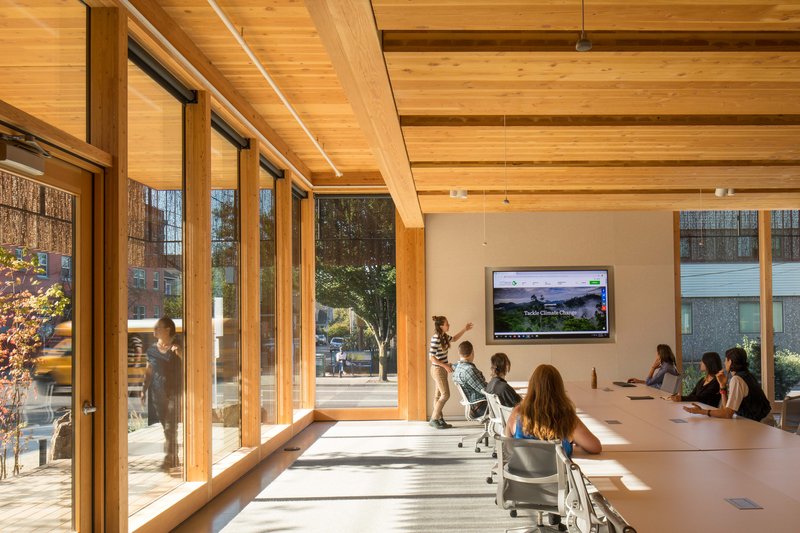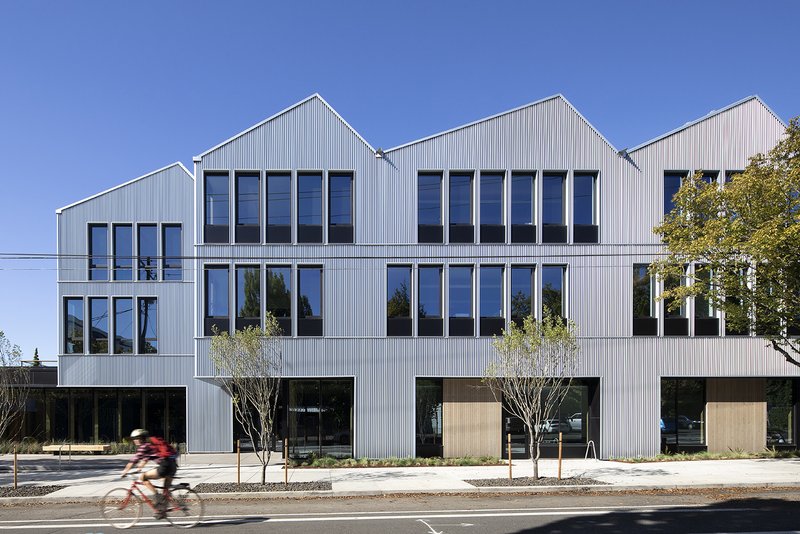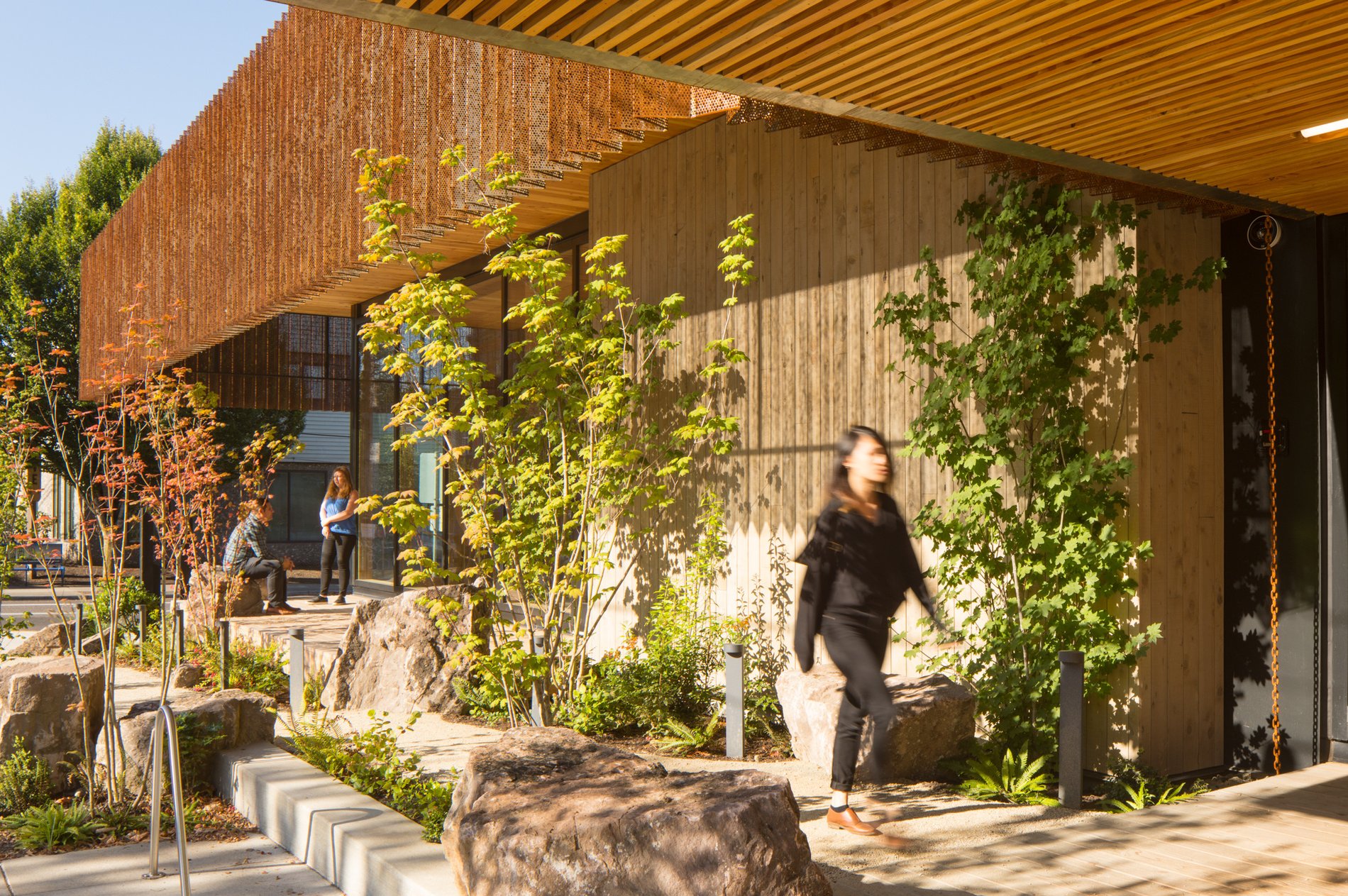
Responsible and sustainable sourcing is a significant part of our design process. LEVER has designed 10 mass timber projects to date that source regional timber, using wood sourced from the Northwest and California - including wood products certified by the Forest Stewardship Council (FSC). We work closely with clients to source sustainable building materials, landscape elements, and native plantings in a responsible manner.
Our design for The Nature Conservancy's Oregon Conservation Center offers an apt case study in sustainable wood sourcing:
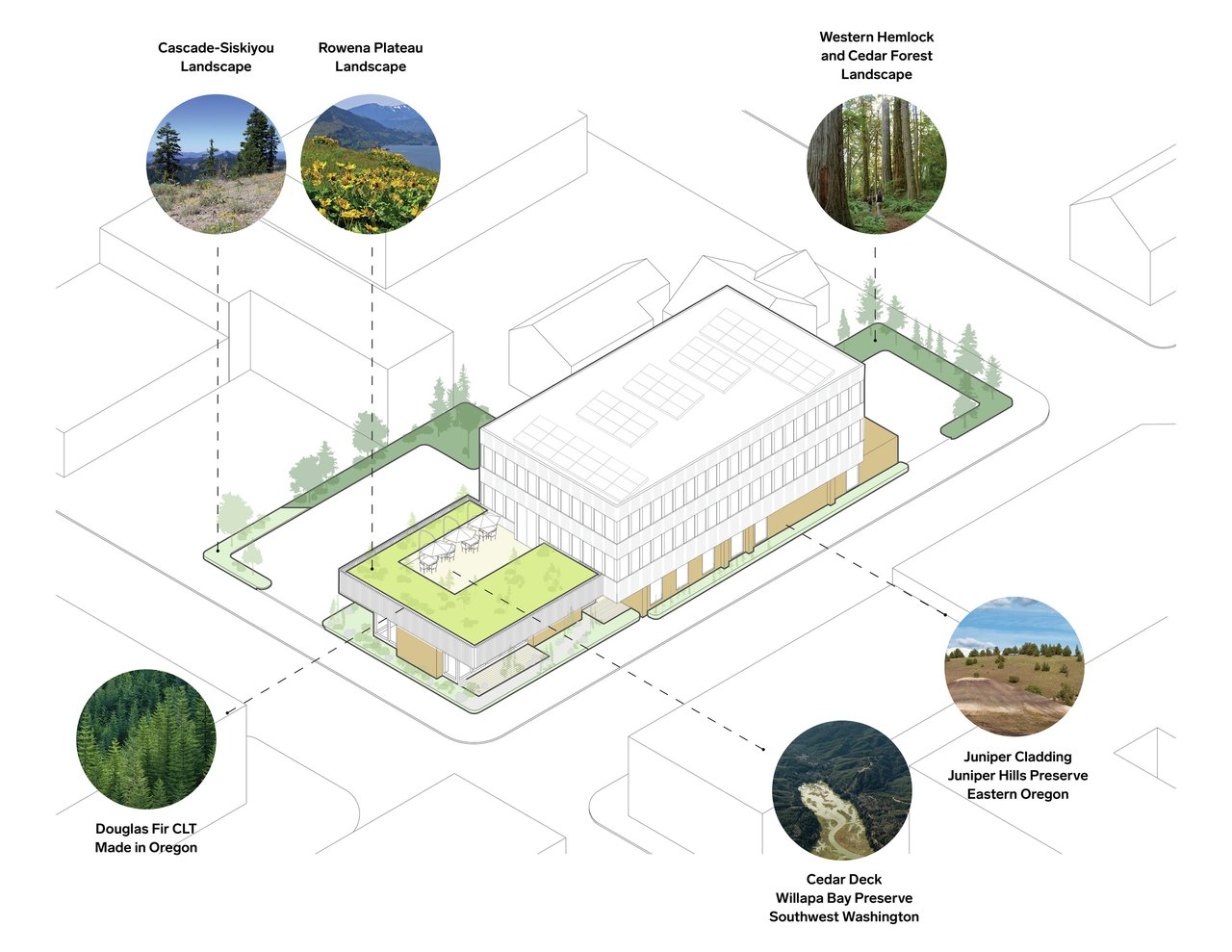
New landscaping is inspired by natural habitats across the state, and materials have been sustainably sourced from regional manufacturers as well as the client's own conservation sites.
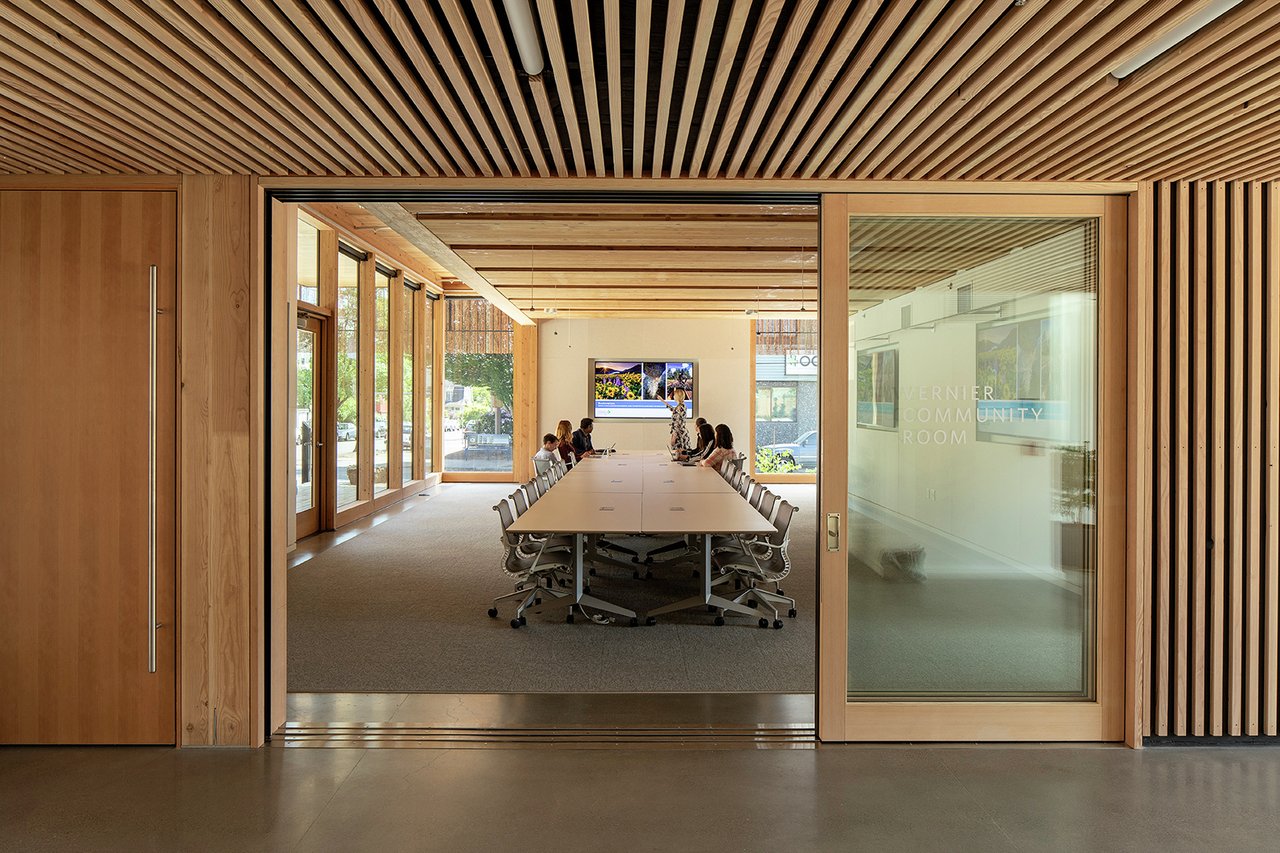
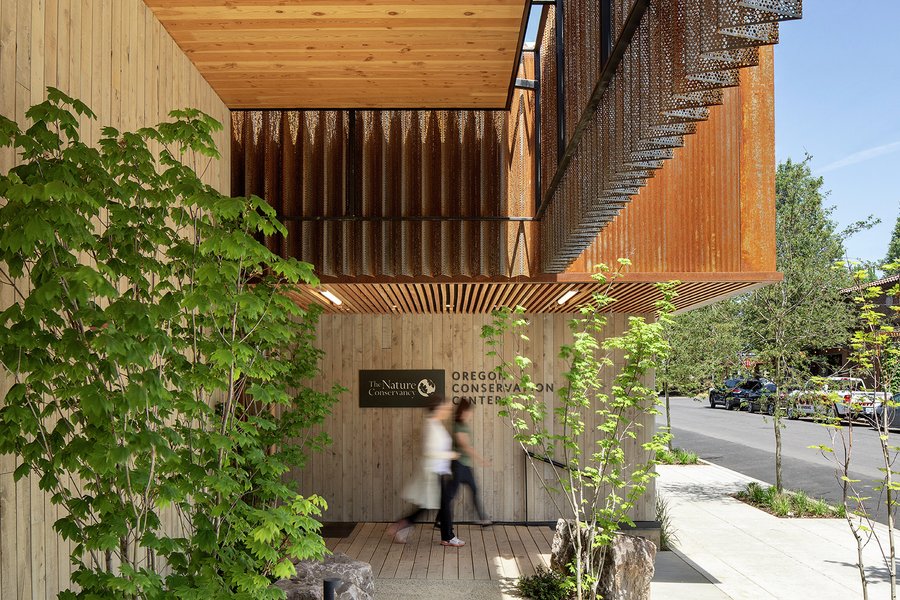
Exterior siding and furniture within the building are made out of Restoration Juniper
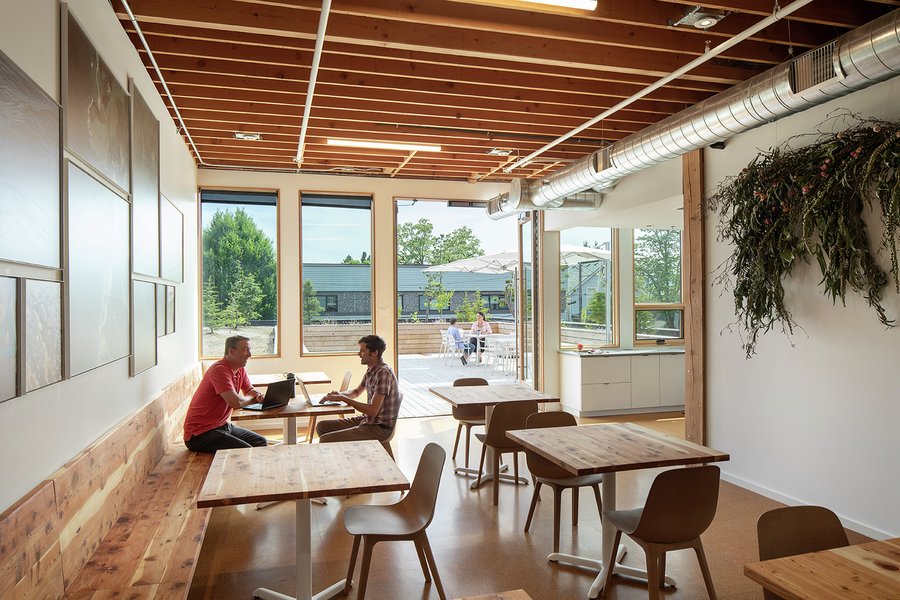
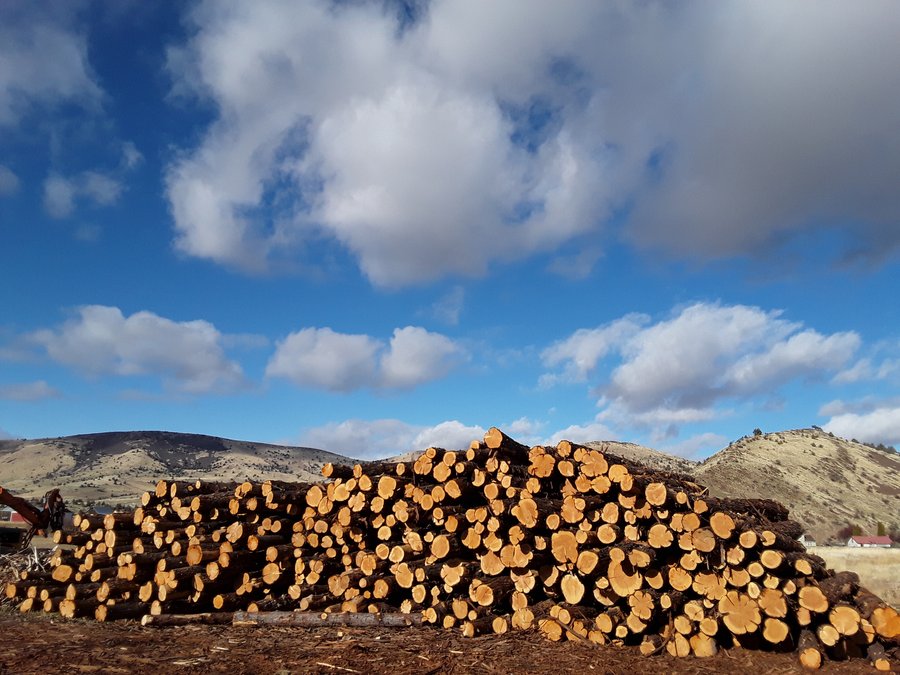
Juniper used in the project was removed from the Juniper Hills Preserve in Central Oregon as part of a project to restore native grasslands and reduce the overcrowding of juniper.
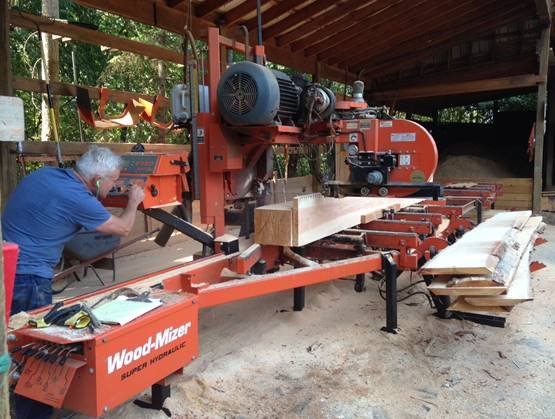
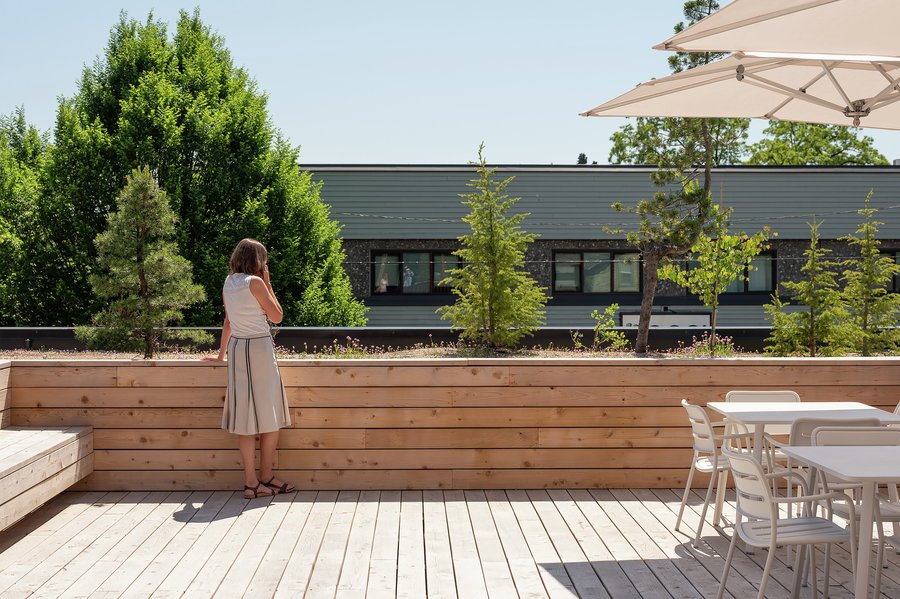
All exterior decking used on the project was sourced from The Nature Conservancyʼs Ellsworth Creek Preserve old growth restoration projects.
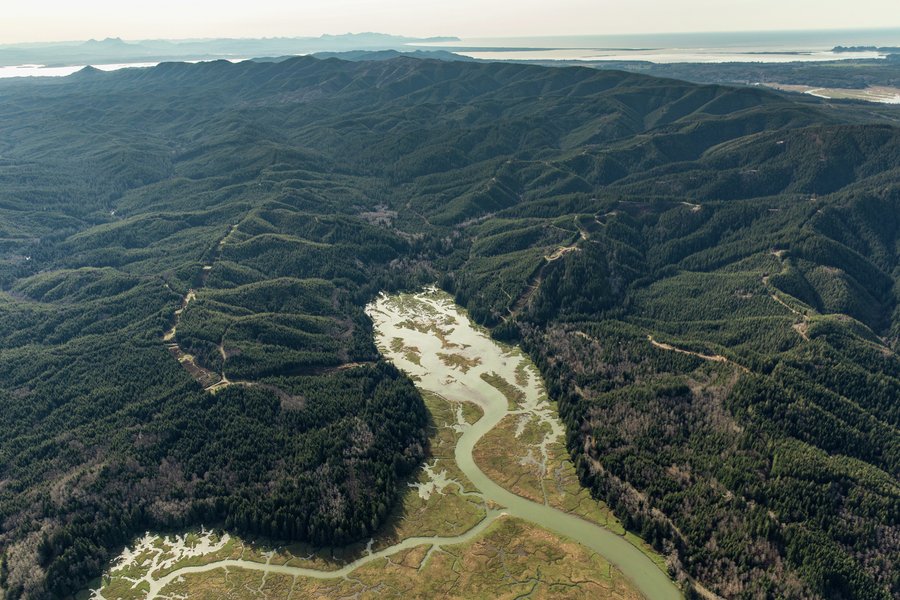
The Ellsworth Creek Preserve is located in Willapa Bay, Washington
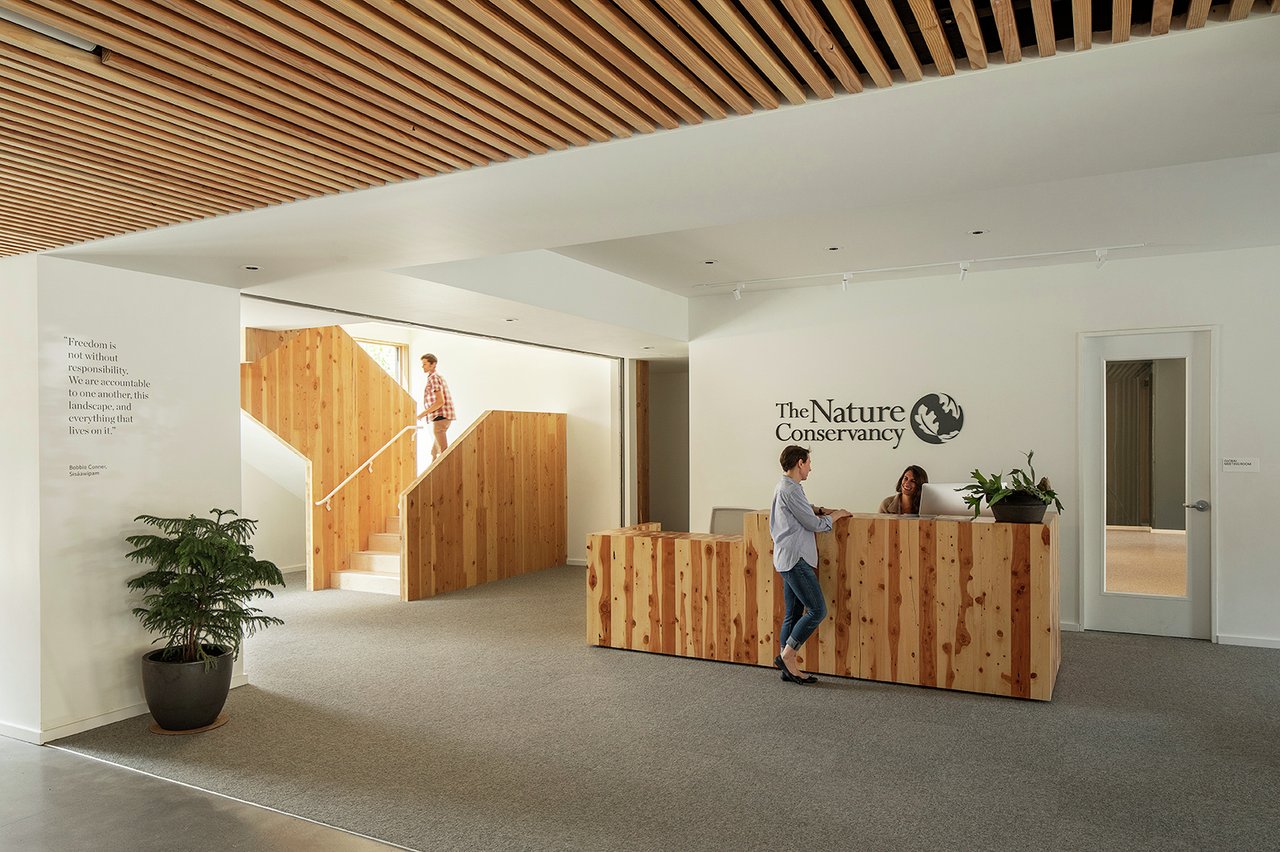
FSC Certified Douglas fir lattice located at the building entry and lobby
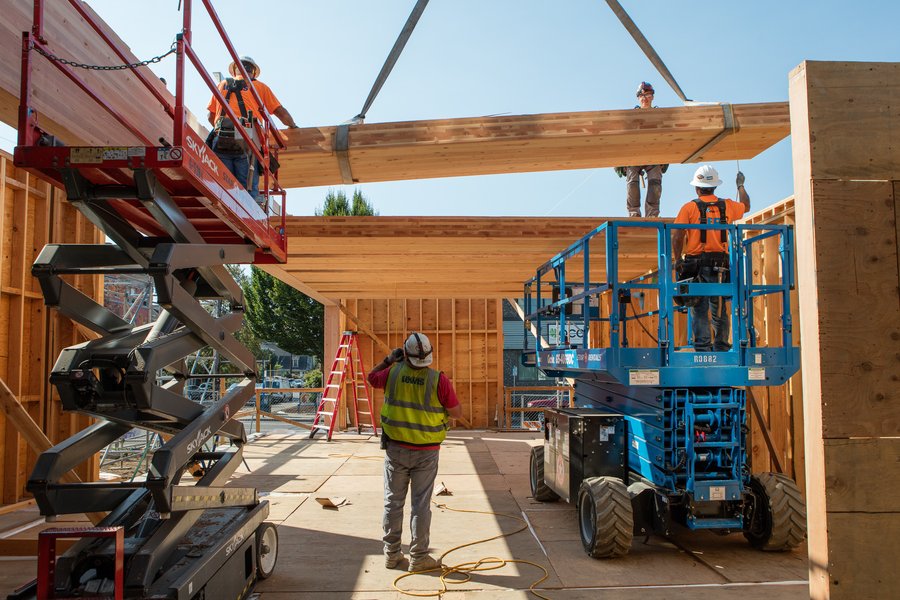
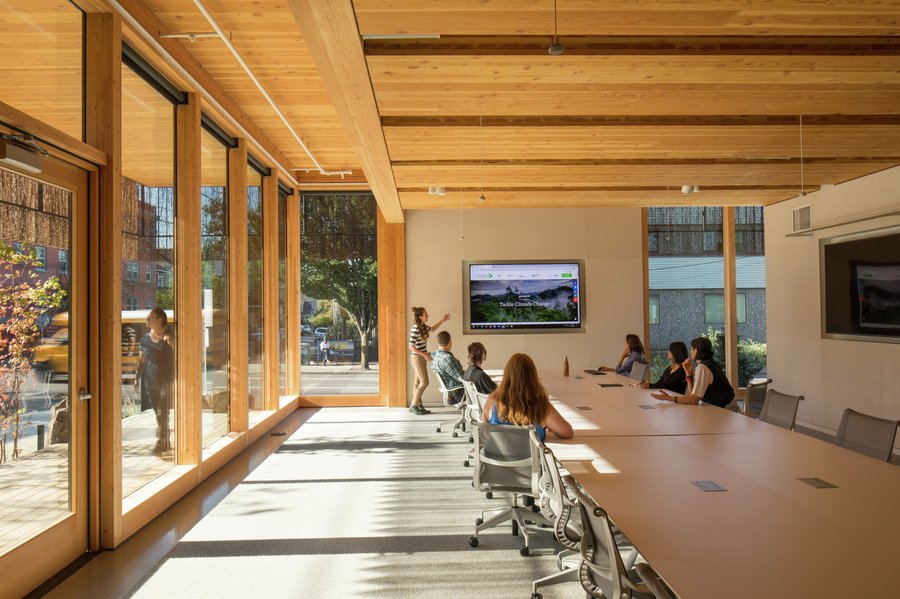
The Cross Laminated Timber (CLT) ceiling panels and Glue Laminated columns and beams are FSC certified
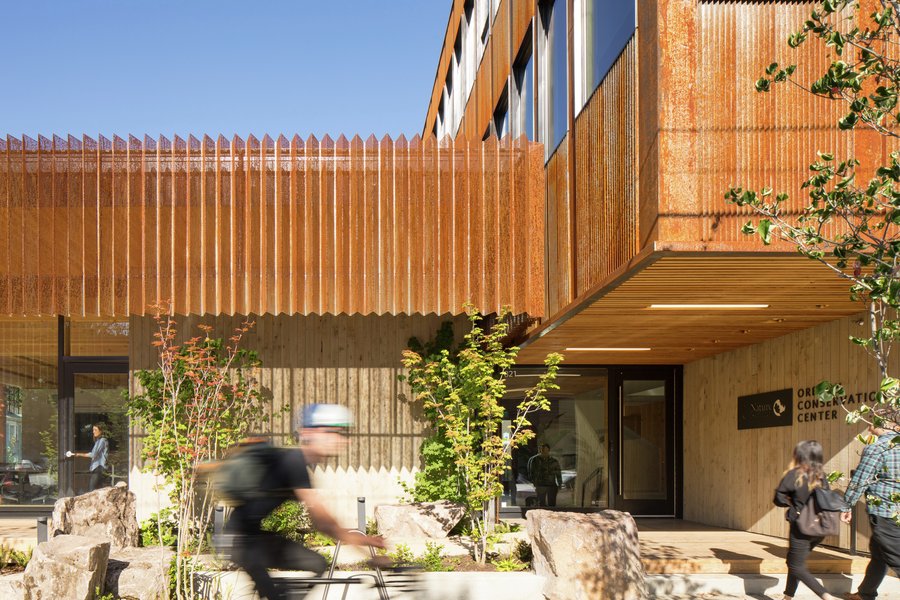
Project Team Acknowledgements
To help achieve the project goals, an interdisciplinary project team worked together to identify and evaluate wood sourcing options. The collaborative success of the project could not have been achieved without the support and leadership from The Nature Conservancy as well as project partners Project^, Lease Crutcher Lewis, and Sustainable Northwest Wood.



